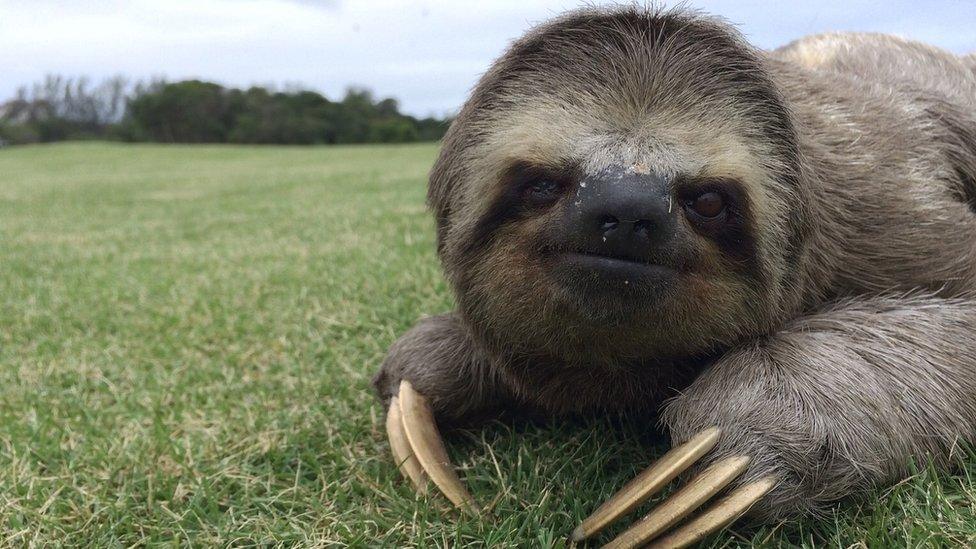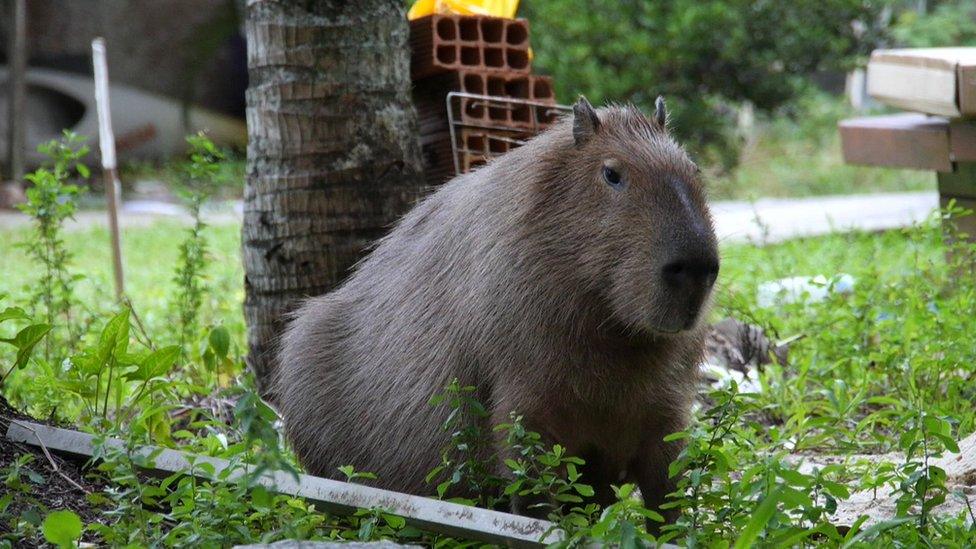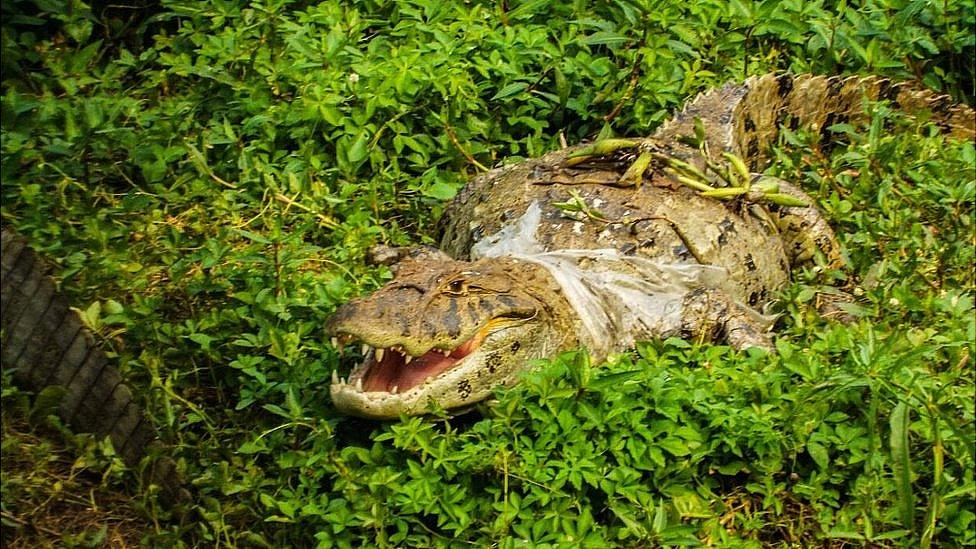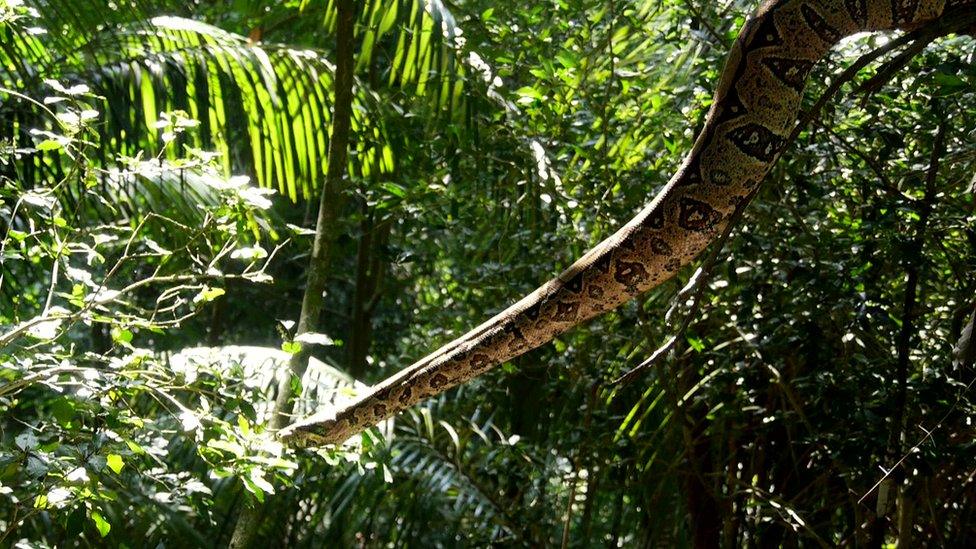Rio 2016: Venues deal with some unusual visitors
- Published

Sloths have wandered in from surrounding forests
Alligators, sloths, capybaras and snakes are some of the unexpected visitors showing up at Olympic venues built in areas surrounded by lagoons and vegetation.
The venues have teams responsible for identifying the animals and sending them back to their natural habitat, says Tania Braga, responsible for Sustainability in Rio 2016.
"Around 25% of Rio has original forests," she told BBC Brasil.
"We don't want to hide the animals, we want to show that we can live side by side. It's a privilege to have such diversity to show."
Around the golf course in Barra da Tijuca, the western district of the city where the main Olympic infra-structure has been built, there are about 230 different types of animals including a threatened species of alligator.

Capybaras caused damage to the golf course in the run-up to the Games

This alligator was found with plastic rubbish wrapped around its neck in Barra da Tijuca
According to Ms Braga, they are "well adapted and a much less aggressive species than the ones found in Florida".
"When they reach the golf course, for instance, we make sure there is no risk to the animals and to the public."
Earlier in the year, capybaras - giant rodents that are a common sight in the area - caused damage to the grass.
The building of the golf course in a protected area caused controversy, but organisers say that conditions around the venue now are actually better than they were before.
It is a controversial assessment considering the poor conditions in the lagoons and the diminishing size of natural habitats.

Snakes can also be seen near some of the venues
"With urban expansion, people started living closer and closer to the animals. In fact, we invaded their space," says biologist Izar Aximoff.
A group of biologists who monitor conditions in the area highlight the struggle of animals such as alligators to survive. Images kept by the team show alligators swimming in sewage, resting in floating rubbish and caught in plastic.
"Developments in the area surrounding the Olympic Park intensified in the past 30 years and reached a critical point now, forcing animals like alligators and snakes out of their natural habitat," said geologist Silma Cardoso de Santa Maria.
Reports of alligators, snakes and capybaras in swimming pools and backyards are not uncommon.
"Irregular use of land or bad planning caused immense damage also to smaller animals like crabs, birds, fish and insects affecting the whole chain," she added.